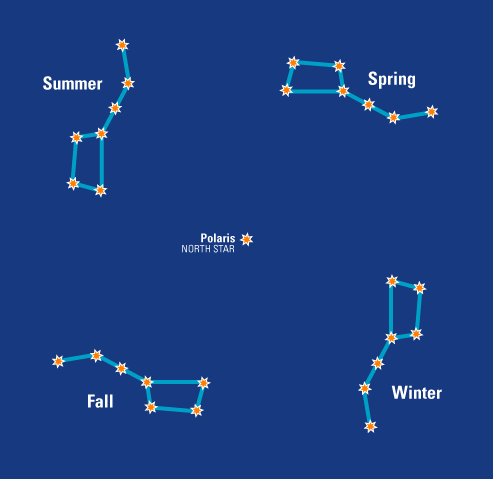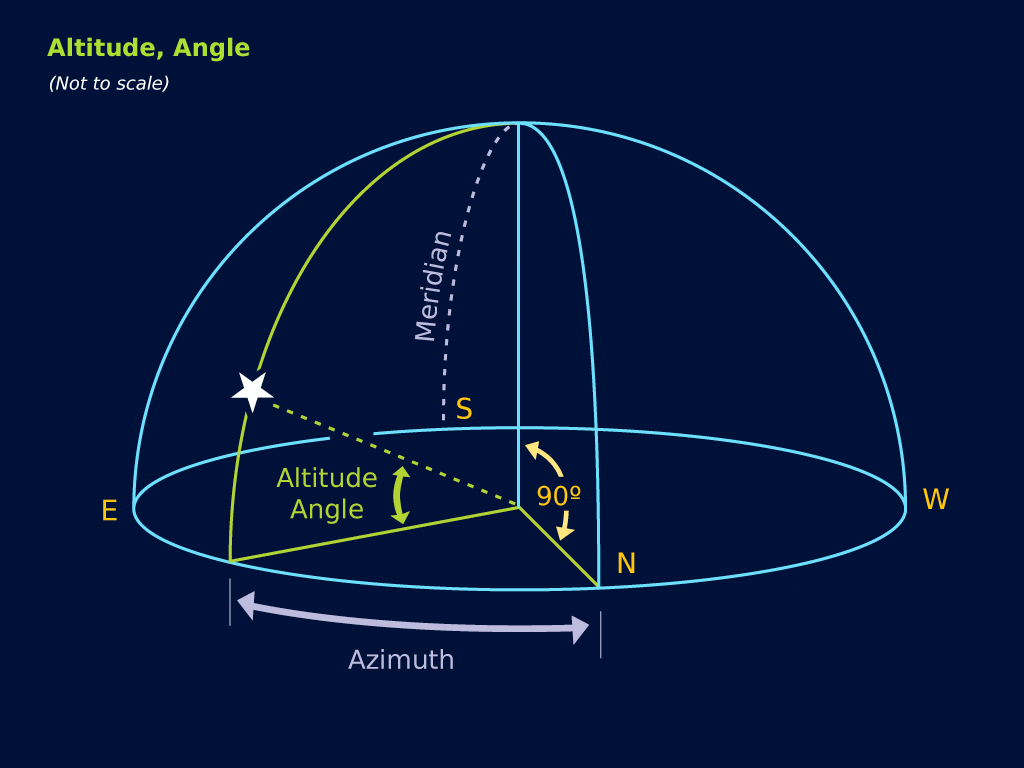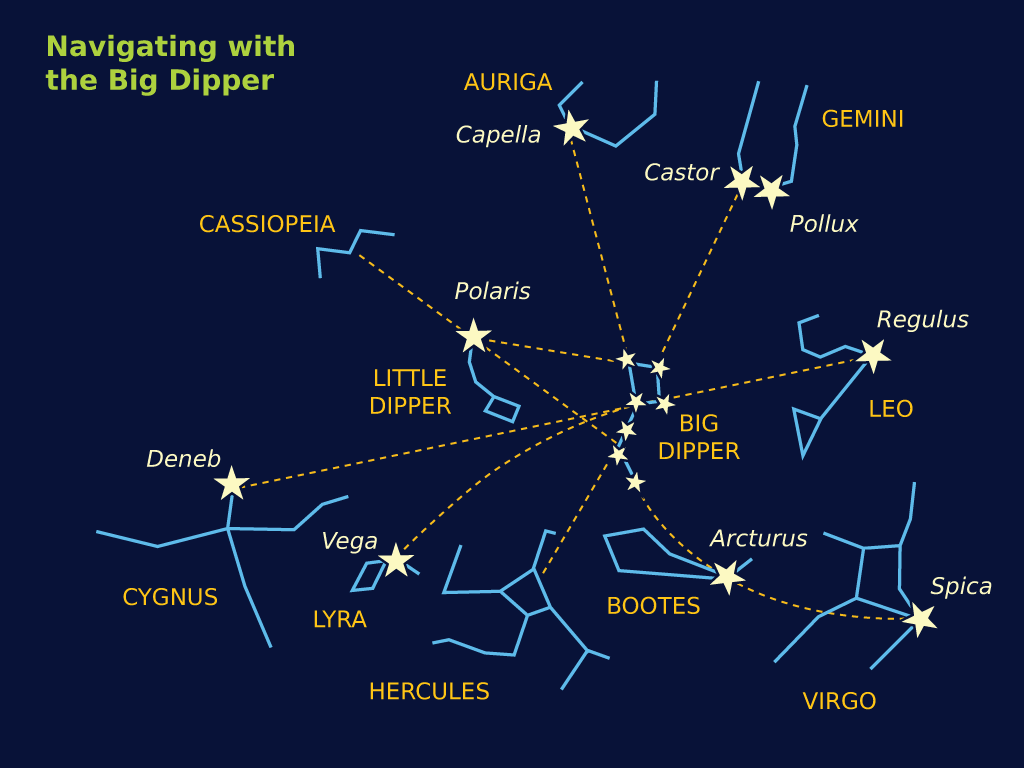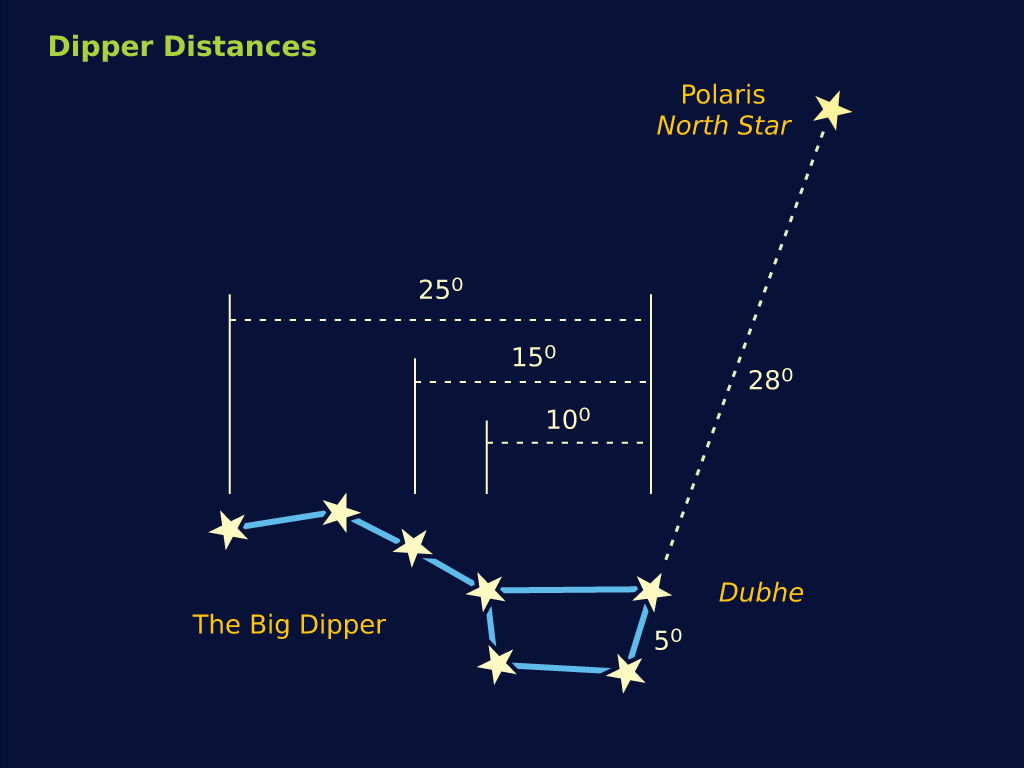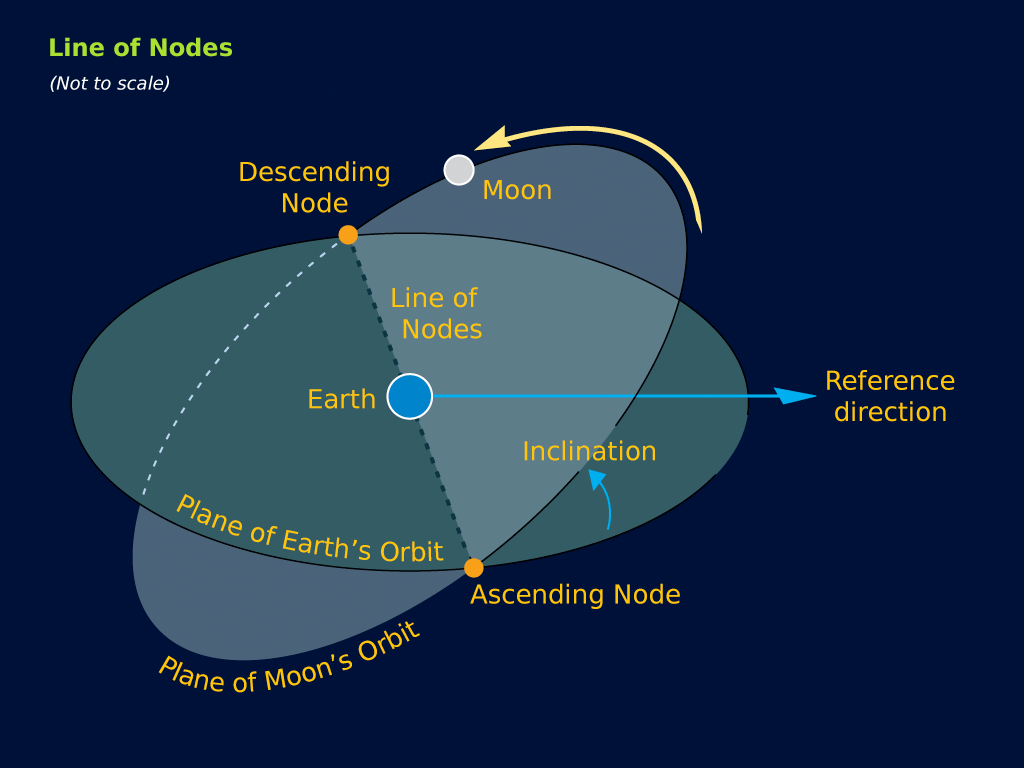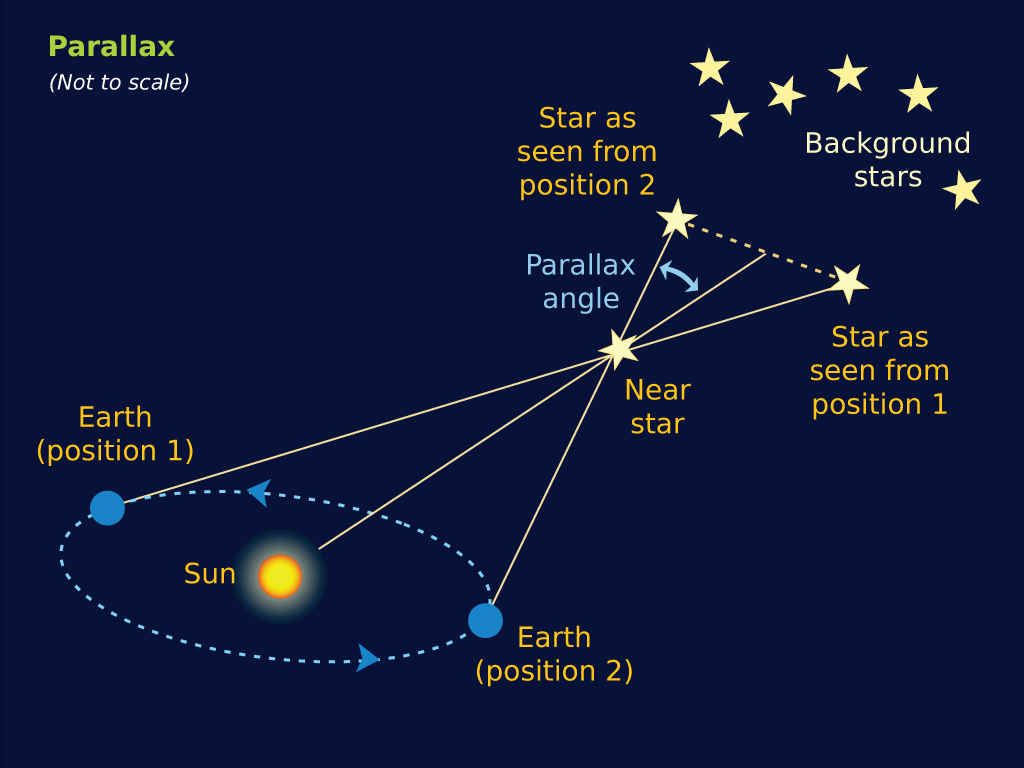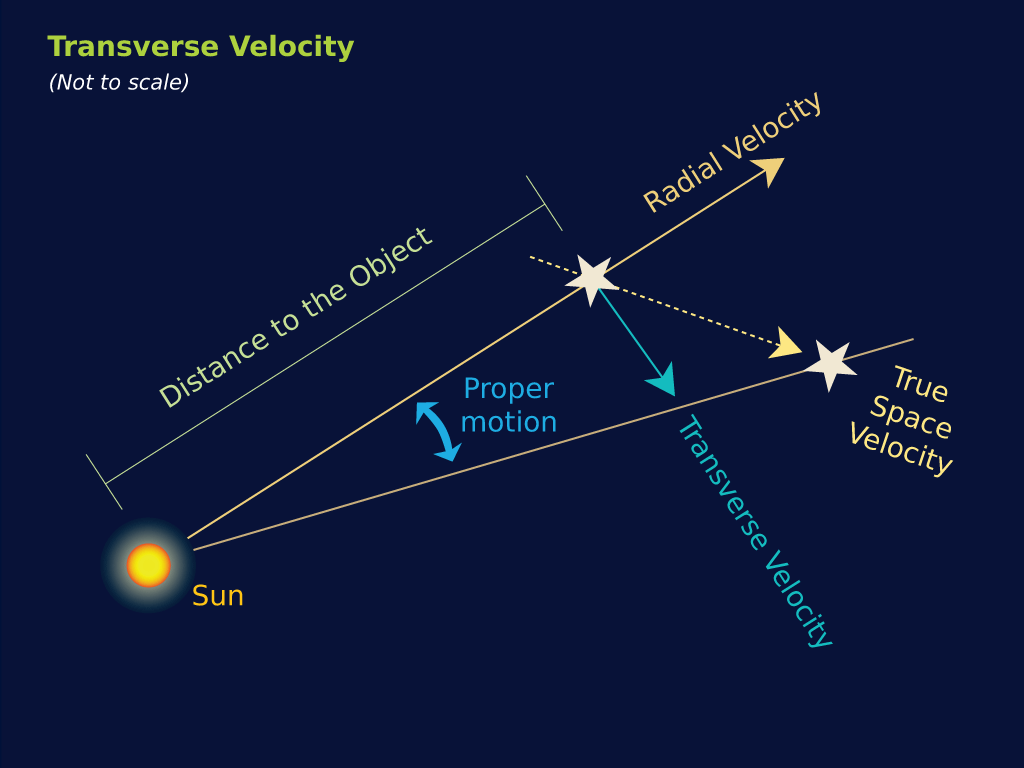The spring is a wonderful time to observe. Learn what to look for in the spring night sky tour.
Your Celestial Guidepost
The Big Dipper is a great starting point to learn your way around the night sky; in spring it's conveniently overhead. The Big Dipper itself is not an official constellation but part of a larger constellation called Ursa Major (the Great Bear). Ancient cultures saw the Big Dipper's star pattern as a bear with a long tail.
The orientation of the Big Dipper from mid-northern latitudes one hour after sunset.
The name originates from the dipper-shaped pattern formed by the seven main stars of the constellation, although observers with keen vision will see that Mizar, the second star from the end of the dipper's handle is, in fact, a double-star. Binoculars make it easier to split the pair.
The stars of the Big Dipper serve as a handy guide to other stars and constellations. The two stars that form the front part of the dipper's bowl point straight to Polaris, the North Star, and because Polaris marks the location of the celestial north pole, the other stars in the sky seem to turn counterclockwise around it. Find Polaris and you know which way is north!
The Little Dipper and Polaris as seen from mid-northern latitudes one hour after sunset.
Polaris itself marks the end of the handle of another dipper—the Little Dipper in Ursa Minor (the Little Bear). Wrapping around Polaris is the constellation Draco. The stars that form this constellation are associated with dragons in the mythologies of many different cultures.
Earth's north pole has wandered over the millennia and so has pointed to different stars in different eras. Right now it points to Polaris, but one of Draco's stars, Thuban, was the North Star when the pyramids were built.
Arc to Arcturus...
The handle of the Big Dipper points to two of spring's brightest stars—Arcturus and Spica.
The Little Dipper and the star Arcturus as seen from mid-northern latitudes one hour after sunset.
Arcturus is the Alpha (meaning the brightest) star of the constellation Bootes (the Herdsman). Follow the arc of the handle of the Big Dipper until you come to a bright orange star. This is Arcturus, forming the point of a pattern of stars resembling a kite.
Arcturus is a giant star, twice as massive and 215 times as bright as the sun. It takes 37 years for the light of Arcturus to reach us, so when we gaze at it, we're seeing the star as it looked 37 years ago.
Ancient astromers had measured the position of Arcturus for nearly 2,000 years, which gave Edmond Halley enough data, in 1718, to discover that it was slowly moving against the background stars of its constellation. Before this discovery of proper motion, the stars were thought to be permanently fixed in the sky. Today we know that all stars move, but Arcturus moves much faster than most—about the width of the full moon every 800 years.
...and Speed on to Spica
If you keep following the arc of the handle of the Big Dipper past Arcturus, you'll encounter another bright star, Spica. Keep them straight by remembering this phrase: "Arc to Arcturus and speed on to Spica."
Polaris to Arcturus and on to Spica as seen from mid-northern latitudes one hour after sunset.
Spica resides in the constellation Virgo (the Virgin), a large zodiacal constellation that over time has represented almost every major female deity.
The Prominent Constellation of Spring
The most prominent constellation in the cool evenings of spring is Leo (the Lion).
Leo as seen from mid-northern latitudes one hour after sunset.
To find Polaris, you used the front of the bowl. To find Leo, you need to draw a line through the stars at the back of the bowl—away from Polaris. Stretch out your arm to its full length and measure about three fist-widths from Phecda—the star at the bottom of the bowl. This should put you at a point within the constellation of Leo.
Leo is a constellation of the Zodiac whose main stars have been included in many different mythologies. Stars depicting the mane and head of Leo form a pattern of stars resembling a sickle or a backward question-mark.The brightest star in Leo is Regulus, marking the end of the handle of the sickle or the dot in the question-mark. Regulus, Arcturus, and Spica are the three brightest stars of spring.
The Leonids meteor shower radiates from this constellation around mid-November.
A Beehive of Stars
To the side of Leo is the fainter constellation of Cancer (the Crab).
The Beehive Cluster in Cancer as seen from mid-northern latitudes one hour after sunset.
M44, the Beehive Cluster.
Inside the boundaries of Cancer is a group of stars neatly tucked together into a beehive shape. The Beehive Cluster (also known as Messier 44) was first described by Galileo, but it has been known since antiquity.
The beehive is easily visible to the unaided eye as a faint round patch of light. Through binoculars, it resembles a swarm of bees.
If you'd like to follow along with NASA's New Horizons Mission to Pluto and the Kuiper Belt, please download our FREE Pluto Safari app. It is available for iOS and Android mobile devices. Simulate the July 14, 2015 flyby of Pluto, get regular mission news updates, and learn the history of Pluto.
Simulation Curriculum is the leader in space science curriculum solutions and the makers of Starry Night, SkySafari and Pluto Safari. Follow the mission to Pluto with us on Twitter @SkySafariAstro, Facebook and Instagram.









